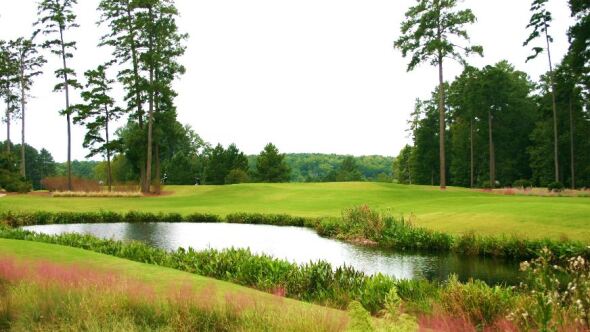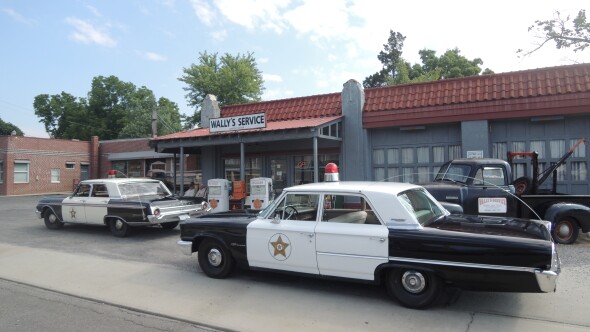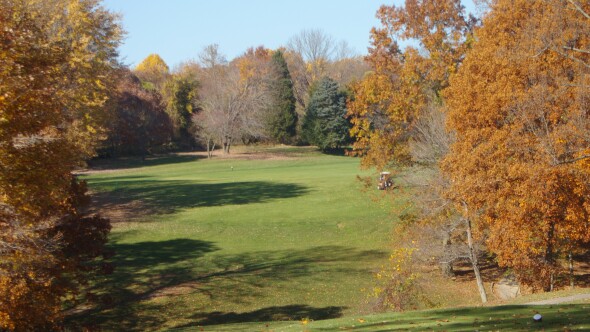In South Carolina, Interstate 77 from Rock Hill to Columbia is an unremarkable stretch of highway. The procession of Cracker Barrel restaurants, Zaxby's and Mini Marts makes the hour drive seem a little longer.
But surprisingly, this humdrum highway through the Piedmont is a gateway to some of the best golf in the Carolinas.
No state does glitzy golf destinations like South Carolina. Players know all about the great golf courses in Myrtle Beach, Hilton Head and Kiawah Island.
But those with a taste for high quality golf can also find it off I-77 in the seven counties known as the Olde English District. Named for British settlers who made this their home near the start of the Revolutionary War, the area is a paradise for golfers who like to play fast, pay less and take the road less traveled.
Here are five courses that make the Olde English District a stellar golf destination.
Camden Country Club
While Camden Country Club is an example of Donald Ross at his most dastardly, it's still a thrill to play one of his works with all of its deception, subtlety and character.
Some of the most benign-looking holes are the toughest -- like no. 5, the shortest par 4 at Camden at 320 yards, which has a single tree complicating most approaches and a severely sloped green that funnels shots toward a deep bunker.
This isn't to suggest that Camden is all about misfortune. Most will come away with fond memories of the sprawling waste bunkers, dotted with scrubby vegetation, which give Camden the feel of Pinehurst.
There is a decidedly southern clubhouse, an inviting backdrop for the 16th and 18th holes.
And how many courses are split by a railroad track -- the dominant feature at no. 13, a brilliant, reachable par 5 at 483 yards, which feels like you're playing a course from another era, which in fact you are.
Camden traces its origins to 1899 as a playground for wealthy vacationers at the nearby Kirkwood Hotel.
Any trip to Camden Country Club should include a peek at nearby Springdale Race Course and the National Steeplechase Museum. This is horse country, which is apparent from the 11th hole at Camden, which borders a dirt-training track.
Cheraw State Park Golf Course
The first 12 holes are what you might expect from Cheraw State Park Golf Course, a popular municipal parkland course where a round tops out at $40. The greens are big and receptive. The fairways are wide, flat and cut through tall pines. Nothing is hidden. Nothing is particularly difficult. No water in sight.
But then the course takes a dramatic and literal turn at no. 13 -- a 492-yard par 4. Firing downhill to a peninsula green, players suddenly realize the draw of Cheraw.
Starting with the signature 13th, the course becomes a thrill ride of scoreable holes where the chance to make a birdie are increased, along with double bogeys and worse.
It leads to an unforgettable finish. Cheraw's shortest hole, the 160-yard 17th, plays toward Lake Juniper. And its best par 5, the 513-yard 18th, starts along its banks.
Little wonder that the 1992 Tom Jackson design was one of 40 courses in the country named a "super value" by Golf Digest.
Cobblestone Park Golf Club
On the balcony of the new clubhouse at 27-hole Cobblestone Park Golf Club, overlooking four stunning holes that wrap around a lake, it's impossible not to notice the non-golfers who have flocked to this idyllic spot in the suburbs of Columbia.
But it is players who can best appreciate the view after taking on those four stellar holes that close Cobblestone Park's Black Course.
If anyone thinks course designer P.B. Dye has lived a charmed life, there is further evidence of it at Cobblestone with the piece of property he was handed. The first hole on each of the three nines is a jaw-dropper as players contemplate the fairway below.
Formerly private and called University Park, the course opened in 1995. But as the economy limped along, it was transformed into a public course, much to the delight of Columbia-area golfers who enjoy Cobblestone's wide fairways, fast greens and private feel.
The course also is home to the University of South Carolina golf team, which takes full advantage of the 16-acre practice facility.
Edgewater Golf Club
Walking the fairways of peaceful, out-of-the-way Edgewater Golf Club, one can almost hear Fuzzy Zoeller whistling a carefree tune.
The former Masters champion lent his name to this real estate/golf venture. And though he didn't design the course, Edgewater has all the player-friendly signatures expected from the easy-going pro.
Completed in 2008, Edgewater is the first design of Bruce Brodsky, who created a course where everything is big -- the tall pines, the sweeping fairways, the sprawling bunkers and the vast, raised, bentgrass greens.
Make no mistake: A round from the 7,103-yard back tees (74.3 rating/141 slope) will test the longest hitters, but this is a course where players can score and only their bad shots will be penalized.
There's plenty of fun stuff at Edgewood, including an island tee and two drivable par 4s in a stretch of three holes. Glance to your left on the 12th tee and you can see the dam for Lake Wateree -- one of the oldest and largest man-made lakes in the state.
Springfield Golf Club
Few courses can match the extraordinary setting of Springfield Golf Club in the suburbs of Charlotte, N.C. It winds through a ritzy housing development that never encroaches on the course, its holes traversing surprisingly rugged land, dotted with ponds and crisscrossed by streams that flow into the Catawba River.
Designer Clyde Johnston didn't waste the land, creating a course full of stunning holes -- notably nos. 10 and 12, both with elevated tees and greens, but with vastly different visual appeal.
There is a downside to the rugged terrain: With drop-offs on many fairways and around the greens -- especially on the front nine -- Springfield can severely penalize shots that are slightly off line.
The upside at Springfield are the immaculate greens, which are fast, true and moderately sloped. Hit a putt on line here and it will go in the hole.
After a round on a course of this quality, it only seems appropriate to dine in kind. Just five miles across I-77 in Fort Mill, the Fish Market Grill is antebellum on the outside and thoroughly modern on the inside, with transcendent versions of old standbys such as Ahi tuna, Chilean sea bass, crab cakes and shrimp and grits.

















